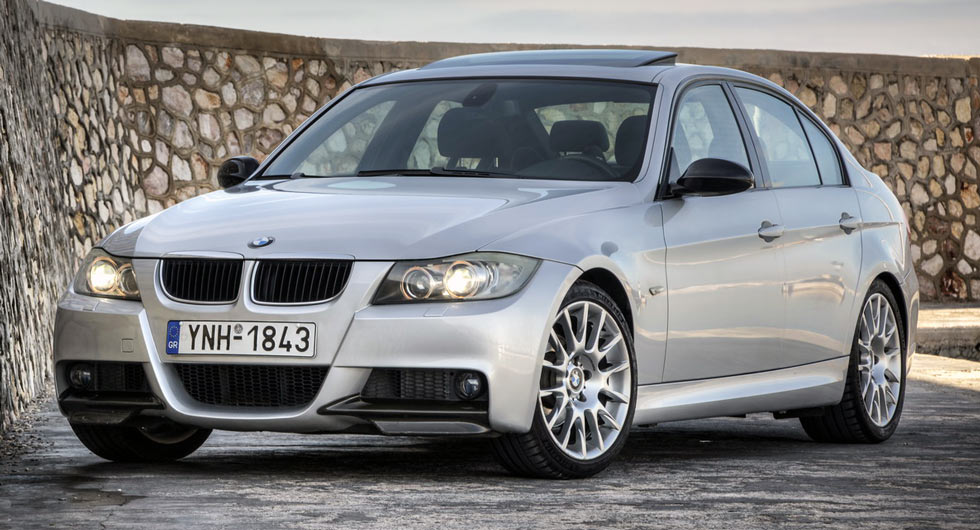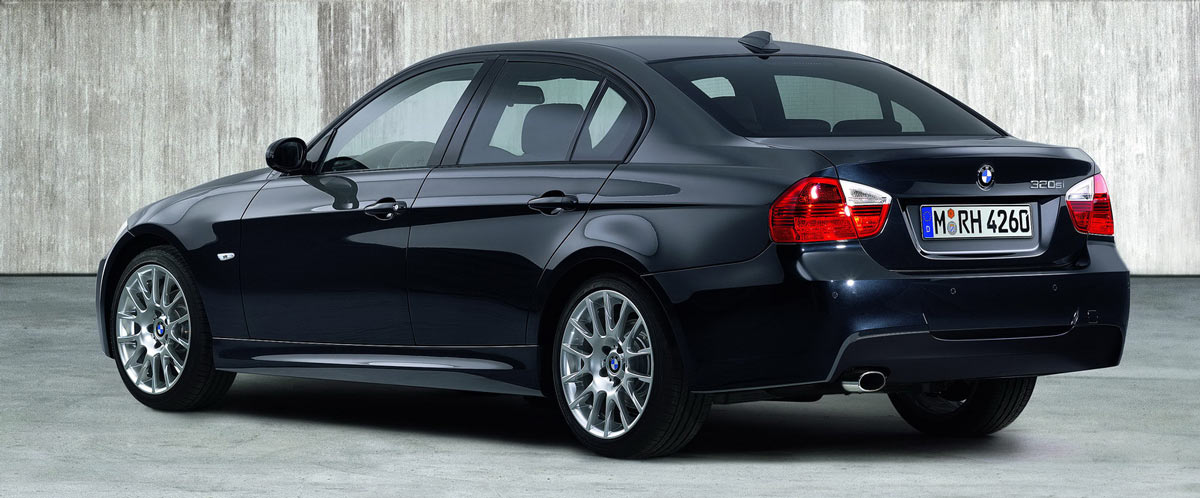Want a future classic Bimmer for just a fraction of an M3 s money? Start reading…
The BMW 320si is not another special edition with a handful of red stitching on the seats and some carbon fiber inserts on the dash. Nor is it a pompous top of the range ’Ring model which costs more than a small apartment in South Kensington.
In fact, it is a natural born future classic and one of the most affordable homologation special models money can buy. All packed in a 4 door saloon for everyday usage.
Nowadays, a decade after production ended, its price has dropped to second hand city cars’ levels. Anyone seeking for a clever investment? Of course, all that applies if you live in Europe because BMW never offered the 320si in North America.
The story – the engine
BMW’s project “320si” was born in order to meet the requirements of the WTCC and Super 2000 regulations. To do so, the Germans built 2,600 units between late 2005 and mid-2006, which included 500 RHD models. The car was intended for the European market solely, but in recent years, we have seen some of these rarities enter the Japanese market as imports from the UK.
Some say that the core of the car was its engine (N45B20S), which was hand-built especially for this model in Hams Hall, alongside the racing units. This is half the story. Actually, the engine was one of the highlights.
It produces a maximum output of 170hp (173PS) at 7,000 rpm and 210Nm (155 lb·ft) at 4,250 rpm. Paired to a six-speed manual, it allowed for a top speed of 225 km/h or 140 mph and acceleration to 100 km/h (62mph) in 8.1 seconds. That’s versus the regular 2005-2007 320i’s 150PS (148hp) that did 0-100km/h in 9.0 sec and later on, the facelifted 2011/2013 320i’s 168hp (170PS) and 8.2 sec run.
A completely unique creation, it was not an evolution of the N46B20 of the normal E90 320i. In comparison, it had different bore and stroke dimensions to aid revving (85mm x 88mm), wilder cams, bigger valves, compression ratio up to 11:1 and was Valvetronic free for instant throttle response! Oh, it also wore a kinky valve cover made of carbon, giving an overall 10 kg (22 lbs) weight reduction.
This four-banger loves to be revved hard and the power band extends up to 7,000 rpm, making a sweet sound – sporty and “beefy”. The low end torque is just adequate but, in conjunction with the ultra-low final drive ratio, it performs surprisingly well for a two liter 4-pot.
By no means should it be considered as a 325i alternative for long distance cruising. It only matches the straight six in consumption matters, where an average of just under 13 l/100 km (equal to 18mpg US / 21.7mpg UK) should be concerned a normality. When driven as it should, 15 l/100km (15.7mpg US or 18.8mpg UK) is the figure to wait for. And all that using 98 or 100 RON fuel. Not because the factory says so, but in order to protect the engine from catastrophic knocking. Which (the engine), is generally prone to failure in one way or another…
Although BMW never admitted the fact, the major drawback of the 320si is engine block cracks. To be more precise, the aluminum cylinder sleeves (liners) used in this engine, along with the very thin cylinder block walls, make a deadly cocktail which hates abrupt temperature rises and requires extra care until the engine reaches its operating temperature. And there is not one damn gauge to check this (coolant – oil). If not treated properly, usually the sleeve of the second or the third cylinder (most common ones) fail, and leave the lucky owner €7,000-10,000 short. That is for a new power unit from BMW, which is willing to buy back the broken one in order to rebuild and resell it. Yes, they “don’t know”…
Cheaper repairs include replacing the aluminum sleeves with cast iron ones (search through the net – there are dedicated engine specialists who perform such a job), but, of course, prevention is the golden rule. That means treating the engine in a more “sensitive” way. This includes usage of premium petrol, oil change intervals which should not exceed 8,000-10.000 km or about 5,000 to 6,000 miles (using the proper oil), correct engine warming up before exceeding 3,000-3,500 rpm, injector and fuel pump inspection/cleaning every 4-5 years or so, and last but not least, valve clearances checking as stated by the manufacturer.
Of course, as these cars are already in the streets for 10 years, it is not a bad idea to perform a compression test along with a boroscope camera inspection before buying one, or in order to check the condition of your engine. Better be safe than sorry.
Best handling non-M E9x, by far
As stated before, the unique engine is just one highlight of this special car. Only a few though, have paid attention to the marvelous job carried out in terms of weight balance and suspension set up. Primarily, the engine has been placed in a way to sit lower and further back, towards the cabin, improving vehicle’s weight distribution and lowering its center of gravity.
BMW’s M-division spent quite some time fine tuning the suspension in order to get the maximum out of the car. To do so, everything has been re-calibrated; shock absorbers, springs, torsion bars, bushes and angles. Lastly, the 320si, sits on a special set of 18” BMW Performance alloys (216), which have the exact shape of the WTCC cars’.
Together with the use of the 325i’s brakes, all these provide a rewarding feeling on all kinds of twisty roads. The car hits corners superbly and the balance throughout a curve is fantastic. Understeer occurs purely by driver’s misjudgment and oversteer only when asked for. Sadly, the absence of an LSD (inexcusable for the model’s disposition), deprive a crispier response on slow corners’ exits.
The 320si is claimed to be the best handling E9x from all the non-M bunch and we couldn’t agree more. No sixer can transfuse the balance of a 4-potter in this hull, especially when placed like the BMW’s engineers did in the 320si.
In a few words, it is a car for the purist, which lacks 20 or so horses (quad throttle bodies would have been nice) and some kind of limited slip differential.
What to look for
In the European market there are still some well cared examples – but they are rarities. Look for the latest models (production date) where it is claimed that are not so prone to engine failure. Check (and double check) the kilometers in the dash in comparison with the several electronic units. If the average speed during the vehicle’s lifespan is under 25km/h (16mph), walk away. There might be exemptions, but you must be sure of what you are doing.
Prices start from as low as €7,000 for tired/crash repaired vehicles that operate decently. Pay no more than €14,000 -€15,000 for an excellent example in showroom condition with less than 50,000 genuine km (30,000miles) on the clock, fully stamped service book, excellent interior and good tires. Additional extras (professional navi, leather interior, s/r etc.) may alter the price upwards slightly – but not that much.
Check for engine warning lights corresponding to catalytic convertor problems. It is an expensive repair– but it might be also just an oxygen sensor…
Avoid vehicles with body kits, different rims or other aesthetic “improvements”, which alter the original looks of the car. Make an exemption for genuine BMW Performance parts, which add up value. You can take a look at used examples over at Mobile.de.
It is not the easiest car to live with but is so rewarding behind the wheel. Since prices remain at these levels, it is a good investment as it has already been considered as a future classic. Think it over and don’t hesitate!
By Stratis Petrouneas
POINTS FOR
– Natural born classic, just 2.600 pcs worldwide
– The best handling E9x (M3 excluded)
– Rev-happy engine, great sound
– Will always have spare parts (BMW politics)
POINTS AGAINST
– Engine failure problems
– Fuel consumption
– Service costs (inc. valve clearance adjustment every 4 years/50k km)
Photos George Svolopoulos & BMW




















